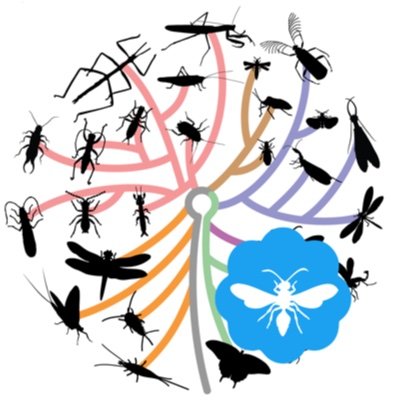@monotomidae To soften the blow of learning of new(-ish) wasp families, here's a female Typhoctes peculiaris for you.
Family Chyphotidae. Previously in Bradnobaenidae. Before that, in Mutillidae.
👍🏼👍🏼😅
For some reason, I’ve recently been thinking of this drawing by @americanbeetles , president-elect of @EntCollNet .
We commissioned it a few years ago to thank @JackiWhisenant for volunteering in the WIRC.
[Jacki was recurating our carabids at the time.]
ANYWAY, it is lovely.
We have a wonderful 20 yr old undergrad who has been studying stag beetles for TEN years.
Let’s just say that his curatorial attention to detail is…remarkable.
Yes, we are helping him write and submit a couple of manuscripts!
Anyone looking to add a PhD student for Fall 2021?
@CrawliesWithCri Well, here’s one!
Cyphomyia sp., from Trinidad.
My goodness, this little robber fly is adorable.
Although rather diminutive (relative to its larger asilid relatives), it makes up for its small size with a fantastic common name: the “gnat ogre”.
Holcocephala fusca (?). collected in Madison, WI, 01 September 2019.
@BeesYork I'll see your Alloscirtetica lanosa...and raise you Dasymutilla sackenii.
Dasymutilla is the largest genus in North America—it's difficult to separate from the South American genus Traumatomutilla. Species from both will likely be split into several genera in the future.
This wingless wasp may look mutillid-esque, but it is not a velvet ant! It's a female of Typhoctes peculiaris (Cresson, 1875).
Typhoctes and Chyphotes, two new world genera formerly in Bradynobaenidae, are now considered to comprise a separate family: Chyphotidae.
This orchid bee (Apidae: Euglossini) was collected in Nuevo León, México. It was part of a recent donation of Central and South American material.
Male orchid bees collect and store orchid volatiles in their hind legs to attract females.
#MetallicMonday #WorldBeeDay
May we all soldier on through whatever this #FlyDayFriday brings our way.
Cyphomyia sp., Trinidad.
#Stratiomyidae #SoldierFly #DevilishlyCute











